Blue Velvet is terrifying, seductive and ahead of its time
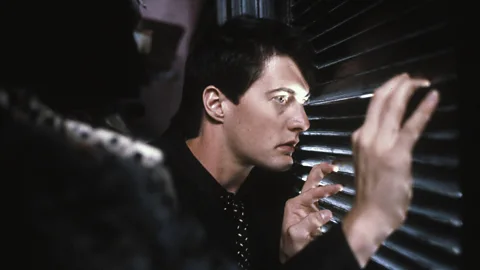 Alamy
AlamyDavid Lynch’s Blue Velvet inspired Tarantino, the Coen brothers and many more. As it turns 30, Nicholas Barber looks back at its influence.
Blue Velvet was released 30 years ago in 1986, but David Lynch’s woozy surrealist masterpiece doesn’t quite fit into that decade. Some of the haircuts are definitely from the 1980s, but it pays homage to the film noirs of the 1940s and ‘50s, its two signature ballads, Blue Velvet and In Dreams, were both recorded in 1963. The hero’s detective work could have been lifted from a 1970s cop show. But more than anything, though, Blue Velvet feels as if it is the first film of the 1990s. One reason why so many critics adore it is that it was several years ahead of its time. But that’s one reason why some critics loathe it, too.
 Alamy
AlamyLynch’s previous film had been 1984’s Dune, an interstellar epic which became one of the most notorious flops in cinema history. Blockbusters about immortal alien worms were obviously not his forte (Lynch has blamed studio interference), but, again, you could say that he was a trailblazer: it’s commonplace now for acclaimed young art-house auteurs to be handed the reins of science-fiction franchises, from Fantastic Four to Jurassic World. At any rate, the producer of Dune, Dino De Laurentiis, gave Lynch another chance. As long as he agreed to a reduced fee, he could make something that was closer in spirit to his experimental debut, 1977’s Eraserhead. Lynch didn’t hesitate.
Instead of being set on a desert planet in a distant galaxy, Blue Velvet would be set in Lumberton, North Carolina, an all-American logging town of white picket fences and street-corner diners. But there is trouble in paradise. One of Lumberton’s residents collapses while watering his lawn, so his clean cut son, Jeffrey Beaumont (Kyle MacLachlan, who had starred in Dune), returns from college to manage the family’s hardware store. Jeffrey is happy enough to be home, but he clearly has a thirst for adventure. After he finds a severed ear on a patch of wasteground, he teams up with Sandy (Laura Dern), the blonde teenage daughter of a police detective, and tries to figure out whose ear it is. The youngsters’ investigations lead to an apartment where an exotic cabaret chanteuse, Dorothy (Isabella Rossellini), is having sadomasochistic sex with an unstable thug, Frank (Dennis Hopper). Jeffrey, who spies on them from inside Dorothy’s cupboard, is appalled... sort of. But he isn’t wholly against the idea of some sadomasochistic sex with Dorothy himself.
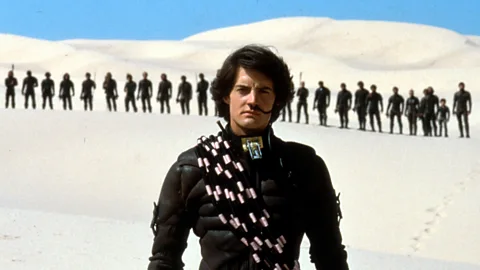 Alamy
AlamyFreudian trip
What to make of it all? The most common reading of Lynch’s eerie crime reverie is that it uncovers the rot which is festering away behind America’s shiny facade. According to Hopper, among other commentators, it was this brave truth-telling that upset so many critics when it was released. But it’s a reading which raises a number of questions. Would anyone in 1986 really have been shocked to hear of unsavoury goings-on in small-town America? And does anyone today really believe that the country’s secret shame involved Italian torch singers in unflattering Frank-N-Furter wigs, and weepy psychopaths who sniff nitrous oxide from their own portable cylinders? Blue Velvet attracted its cult following not by exposing a sordid reality but by staging a terrifying yet seductive fantasy.
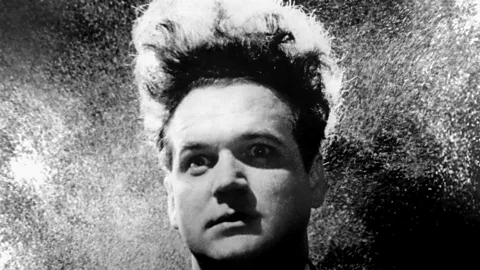 Alamy
AlamyRight from the slow-motion introductory montage, it’s plain that Lynch doesn’t want us to see Lumberton as a real place, but as a make-believe town of stilted dialogue and TV archetypes. Then when Jeffrey stumbles into Dorothy’s depraved world, like Alice falling down the rabbit hole, the film get even weirder: in its most celebrated sequence, a foppish pimp (Dean Stockwell) mimes to a recording of Roy Orbison’s In Dreams, lighting up his face with the lamp he’s using as a mock microphone. It makes more sense - if a Lynch film can ever be said to make sense - to see Blue Velvet not as an indictment of a corrupt America, but as a Freudian study of a boy, on the verge of adulthood, who is torn between the hometown respectability represented by the virginal Sandy (perhaps named after the heroine of Grease) and the illicit pleasures represented by the whore-ish Dorothy (definitely named after the heroine of The Wizard of Oz).
It’s a story of two competing narratives that seem to take place in separate universes. When Dorothy first discovers Jeffrey in her cupboard, she nicks his cheek with a kitchen knife, but the next morning, his face is as smooth as ever. Another night, Frank beats him up viciously, but his bruises fade with miraculous speed. In a sense, he is a substitute for anyone who goes to the cinema. Films allow us, like Jeffrey, to visit a twisted demi-monde of sex and violence and moody music for a couple of dark hours, before returning unscathed to ordinary life.
Postmodern games
Blue Velvet invites countless other interpretations, of course: that’s why viewers are drawn back to it, again and again. But what’s undeniable is that Lynch isn’t telling a straight story (to borrow the title of one of his later films); he is switching between different genres and different tones, reminding us constantly that we are watching a work of fiction.
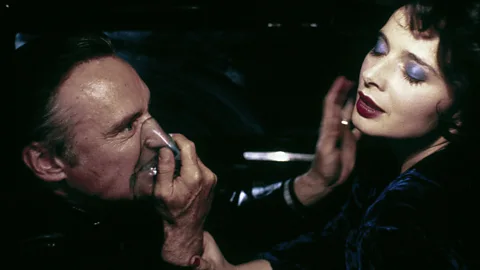 Alamy
AlamyIn 1986, these postmodern games were bamboozling - and, to some critics, irritating. In the Washington Post, Paul Attanasio complained that Blue Velvet was ultimately frivolous, with “a juvenile, ‘Wouldn’t it be neat if ...’ quality”. In a one-star review in the Chicago Sun-Times, Roger Ebert argued that Lynch was being cowardly by repeatedly yanking Jeffrey back from the transgressive underworld of Dorothy and Frank: “Is he afraid that movie audiences might not be ready for stark S&M unless they’re assured it’s all really a joke? I was absorbed and convinced by the relationship between Rossellini and MacLachlan, and ... I didn’t need the director prancing on with a top hat and cane, whistling that it was all in fun.”
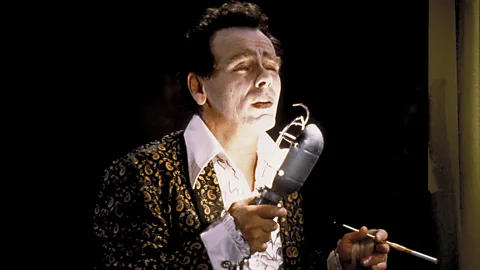 Alamy
AlamyIn the 1990s, though, everything that annoyed Attanasio and Ebert would become standard practice. Just as the rap records of the era were getting into the habit of sampling soul tracks, indie movies were pilfering scenes and settings from wildly incongruous films and sticking them together in bizarre new configurations. They were inspired less by the writer-directors’ lives than by their video collections. They were, in short, copying Blue Velvet. The hip, meta, retro films of the mix-and-match 1990s learnt everything they knew from Lynch.
Just look at how much Reservoir Dogs has in common with Blue Velvet: the career-reviving casting of an older actor, the voice-over by a radio DJ, the severing of an ear, the sinister spin on an innocuous decades-old pop hit (Stuck in the Middle with You). In 1996, the novelist and essayist David Foster Wallace went so far as to dismiss Tarantino as a populist Lynch imitator, someone whose only achievement was to “take what is ragged and distinctive and menacing about [Lynch’s] work and homogenize it, churn it until it’s smooth and cool and hygienic enough for mass consumption”.
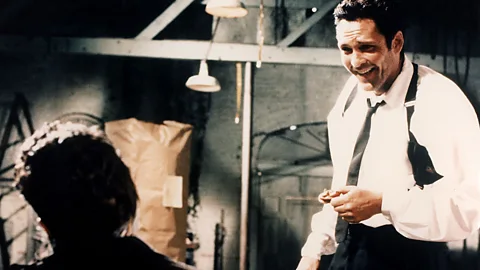 Alamy
AlamyWhether or not you agree with this assessment, there are echoes of Blue Velvet not just in the work of Tarantino, but of Robert Rodriguez, Jim Jarmusch and the Coen brothers, not to mention dozens of inferior Sundance wannabes. Watch any 1990s thriller that couples extreme violence with humour, and which flags up its artificiality with winking references to old songs and movies, and you can bet that the director is a Lynch fan.
Lynch himself can hardly be blamed for all the people who followed in his footsteps, of course. But maybe Blue Velvet should take some responsibility for the pop-cultural tendency to put things in inverted commas - to be arch and ironic instead of sincere. Maybe it has so many devoted fans because, as Ebert observed, it encourages us to peek at our most frightening desires and then back away with a giggle, just as Jeffrey does, rather than having the courage to explore them. In the 1990s, far too many films were wrapped in a comfort blanket made of Blue Velvet.
If you would like to comment on this story or anything else you have seen on BBC Culture, head over to our Facebook page or message us on Twitter.
And if you liked this story, sign up for the weekly bbc.com features newsletter, called “If You Only Read 6 Things This Week”. A handpicked selection of stories from BBC Future, Earth, Culture, Capital, Travel and Autos, delivered to your inbox every Friday.
